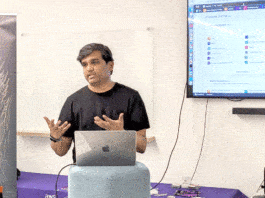
Choosing Joomla as the CMS of choice is possibly one of the best decisions you are going to make in the near future. However, Joomla does not have the search-friendly characteristics that WordPress websites included. This makes your Joomla website quite difficult to spot in the search results.
To solve this problem, you just need to simply follow the 11 steps as listed below and make your Joomla website search engine friendly and search engine optimised.
What is your server type?
This is the first step to make SEO-friendly websites on Joomla. If you are using an IIS server, you might get as helpless and frustrated as an upturned turtle. So our first advice is to forgo an IIS account and install your Joomla package on an Apache server. This will make rewriting URLs a lot smoother. Install mod_rewrite for easily rewriting the modules.
Renaming URLs
Your second priority should be renaming or rewriting your URLs to make them more attractive and easy to discover. To begin with this process, you need to rename the htaccess.txt file to .htaccess; a version used by both mod_rewrite and Joomla.
Remove /images/ from the robots.txt files
One of the greatest disadvantages of using Joomla is the automatically generated robots.txt file that is created during installation. This file directs crawlers not to search or index the images in folders. As we already know, images generate a significant amount of traffic from search engines if optimised correctly. Therefore, the removal of /images/ from your robots.txt file is highly recommended.
Use URL rewriting and SEF URLs options
Search engine-friendly (SEF) URL is a setting that removes all the auto-generated balderdash from the URLs and replaces them with aliases of menu items that are being used on the page(s).
To enable URL rewriting you need to have mod_rewrite enabled and an .htaccess file. URL rewriting is a dynamic setting that removes /index.php/ from the URL.
Installing the JCE Editor
This is a key step towards search engine optimisation and mandatory for every Joomla user. JCE Editor is free and filled with amazing features that help you maintain your site. The two key features that define the JCE Editor include the instructions that prevent it from stripping code that you add through this editor and the dynamic UI that enables you to add images with ALT tags and adjust image dimensions.
Manually adjust the image ALT tags and image dimensions
These may seem like very insignificant properties for new CMS users, but the proper ALT tags to images actually help search engine spiders to index them and list them in search results.
The adjustment of image dimensions allows the space for it to load before the actual image loads. This helps in significant reduction of load times. The JCE Editor allows you to set both the ALT tags and the image dimensions within the image upload tool.
Choosing www. or non-www.
It is recommended to redirect your non-www site to a www version for SEO reasons. Unlike WordPress, Joomla does not redirect your website automatically to either its www. or non-www. version. This poses an unavoidable problem and needs to be corrected manually via the .htaccess file.
You can add the following code to redirect non-www URLs to www:
- RewriteCond %{HTTP_HOST} ^yourdomain.com [NC] RewriteRule ^(.*)$ http://www.yourdomain.com/$1 [L,R=301]
To redirect all www URLs to non-www versions simply add the following code after RewriteEngine On:
- RewriteCond %{HTTP_HOST} ^www.yourdomain.com [NC] RewriteRule ^(.*)$ http://yourdomain.com/$1 [L,R=301]
Maintain consistency during internal linking
Be it Joomla or WordPress, duplicate content is a strict no-no. The most effective way to avoid duplicate content is to consistently link your internal content to any of the www or the non-www versions you chose earlier. The key is to link a single version of the page using a trailing slash or no trailing slash or pages with a suffix or no suffix.
Up the speed of your website
This is a totally controllable factor as far as the Joomla CMS is concerned. Although it is true that Joomla sites do not come out of the wrapper with great speed, there are three easy things you can do to speed up your site.
- Leverage the browser caching – By this, we mean that you can use browser caching methods to cache specific types of content found on your website. You can just add snippets of HTML code to the bottom of the .htaccess file to make this work.
- Enable the Gzip compression – enabling Gzip compression is an impressively easy way to improve website speed. Gzip can essentially compress your code. Simply visit the Global configuration option from the Server menu and then click ‘Yes’ from the Gzip Compression window.
- Image optimisation – Use Google Page Speed tool to download highly optimised versions of your images for your website.
Implementing just these three steps boosts the Google Page Speed Score by at least 95+.
Installation of Xmap
Sitemaps for all websites are extremely necessary to enable spiders to crawl through the content. Xmap is the best sitemap component as far as Joomla is concerned. This tool can seamlessly create HTML and XML sitemaps in tandem for your website. There is a number of components like Virtuemart and sh404sef which are compatible with the Xmap element of Joomla.
Managing meta data
You may think that meta descriptions and title tags have become as redundant as meta keyword tags. But the truth is that they are still crucial if you want an SEO friendly website. SEO Boss is quite an interesting plug-in for Joomla users. It helps you edit metadata for your site.
Managing SEO options is a lot easier with Joomla 2.5+ versions. You will need minimal interference of third-party plug-ins for the process. On-site optimisation does not need to be exceptional in each step, it needs to be strong and regular. This is true when you consider the recent algorithm changes brought along by Google and the new SEO principles.



